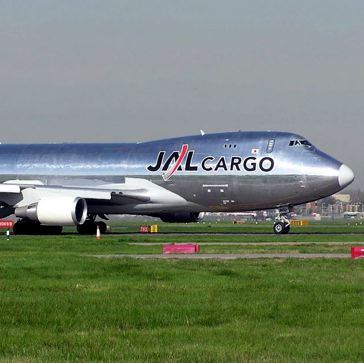By Dan Bence, Matt Calcara and Sarika Chawla for PeterGreenberg.com.
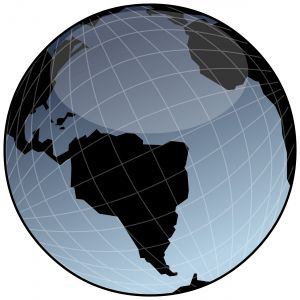 It’s no secret that 2009 was a crazy year in the world of travel.
It’s no secret that 2009 was a crazy year in the world of travel.
From an attempted terrorist attack on Christmas Day to the launch of the Boeing 787 Dreamliner, the year had more than its share of big travel stories.
But what does 2010 hold for travelers? We gazed into our crystal ball to bring you the top travel stories of 2010.
 This year has been a tough one for airlines. With billions in losses despite drastic cuts in personnel, routes and capacity, airlines face 2010 hopeful that it probably couldn’t be much worse than the year they’ve just survived. After all, even perennially profitable airlines like Southwest and Ryanair posted losses in 2009.
This year has been a tough one for airlines. With billions in losses despite drastic cuts in personnel, routes and capacity, airlines face 2010 hopeful that it probably couldn’t be much worse than the year they’ve just survived. After all, even perennially profitable airlines like Southwest and Ryanair posted losses in 2009.
Can airlines seek salvation in additional mergers? Time will tell, but a number of airline mergers could be in the cards for 2010.
In 2009, a number of airlines went belly-up, were sold, or merged with healthier competitors. The small-ish operator Republic Airways grew rapidly as it acquired Denver-based Frontier and Milwaukee-based Midwest and began stitching them together.
The biggest recent merger, that of Delta and Northwest, officially occurred in 2008, but 2009 saw ongoing struggles as Delta began to seriously integrate the two carriers’ operations.
Get Peter’s take in his Travel Detective Blog: Airline Mergers & the World’s Biggest Cruise Ship.
Several airlines also ceased operations altogether, including Scotland’s FlyGlobespan and Slovakia’s SkyEurope. And that’s after 2008 saw the collapse of Eos, Sun Country, Aloha, MAXjet, Silverjet, Zoom and Skybus, among others.
The likeliest candidate for a bankruptcy, sale, or merger in 2010 is probably Japan Airlines, which is unprofitable and deeply in debt. Delta is trying to acquire the carrier, but American Airlines is attempting to keep its OneWorld partner afloat, partly to prevent Delta from acquiring JAL’s lucrative trans-Pacific routes.
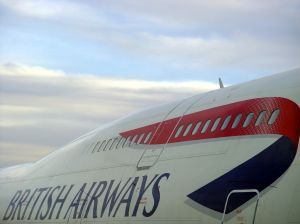 Also in 2010, British Airways will seek to consummate its merger with Spain’s Iberia, despite competition concerns on both sides of the Atlantic. The merger is likely to go through—eventually—but BA may be forced to make concessions such as auctioning off its landing slots at Heathrow. Another potential snag is BA’s deteriorating financial position and soaring pension obligations.
Also in 2010, British Airways will seek to consummate its merger with Spain’s Iberia, despite competition concerns on both sides of the Atlantic. The merger is likely to go through—eventually—but BA may be forced to make concessions such as auctioning off its landing slots at Heathrow. Another potential snag is BA’s deteriorating financial position and soaring pension obligations.
Elsewhere, BA has also held informal merger talks with Australia’s Qantas, which is facing tough competition in its home market. Any merger between these airlines would have to wait until the BA-Iberia tie-up question is resolved.
Cheeky low-cost Ryanair, which has twice tried to buy home-turf competitor Aer Lingus, most recently in January 2009, may try again, although most analysts currently consider this unlikely. But with the Irish government (which owns 25 percent of Aer Lingus) bleeding more red than the airlines, a sale of its remaining shares is not entirely out of the question.
Regardless of what eventually happens in 2010, it looks almost certain that airlines are in for a bumpy ride.
For the latest air travel news, visit our Airlines & Airports section.
If 2009 was the year of cruise deals, 2010 will be the year of savvy cruising. Clued-in travelers know that cruising can offer great value for your travel dollars … if you know how to play the game.
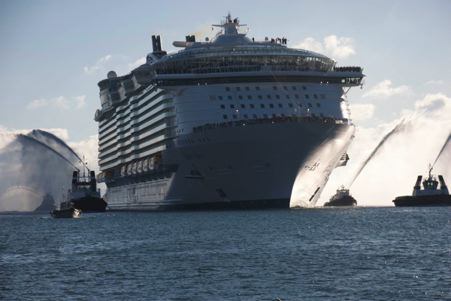 According to the cruise industry’s trade association, Cruise Lines International Association (CLIA), the number of cruisers worldwide grew steadily from 1990, but—not surprisingly—suffered a decline in 2008, particularly in the second half of the year.
According to the cruise industry’s trade association, Cruise Lines International Association (CLIA), the number of cruisers worldwide grew steadily from 1990, but—not surprisingly—suffered a decline in 2008, particularly in the second half of the year.
The recession left many cruise lines doing whatever it took to fill cabins, which translated to suicidal pricing and exceptional deals for travelers. The trick is to avoid onboard spending, which includes specialty dining, photographs, gambling, etc.
Those deals may not be as plentiful in 2010, but expect to find better low and shoulder seasons, as well as last-minute deals. After all, it does cruise lines no good to sail with empty cabins.
 Of course, 2009 was also the year of the mega-cruise ship, with the introduction of Royal Caribbean’s Oasis of the Seas and the Carnival Dream. That trend will continue in 2010 with RCI’s Allure of the Seas and NCL’s Norwegian Epic.
Of course, 2009 was also the year of the mega-cruise ship, with the introduction of Royal Caribbean’s Oasis of the Seas and the Carnival Dream. That trend will continue in 2010 with RCI’s Allure of the Seas and NCL’s Norwegian Epic.
Although we’re not necessarily fans of the mega-cruise ship concept—as an experience and of the inevitable impact on the ports—there’s no doubt that the novelty and sheer volume of activities and amenities will intrigue travelers.
As an alternative, however, European river cruises were on the rise in 2009 and that trend is expected to continue. They tend to be pricier than ocean cruises, but in many cases, the rate includes alcoholic beverages and shore excursions, which are usually two major sources of revenue for ocean liners.
Visit our Cruises section for more information.
THE DREAMLINER (FINALLY) TAKING OFF
While December 2009 saw the first test flight of Boeing’s much-ballyhooed new airliner, the Boeing 787 Dreamliner, it also gave rise to nagging doubts that Boeing could deliver—in more ways than one.
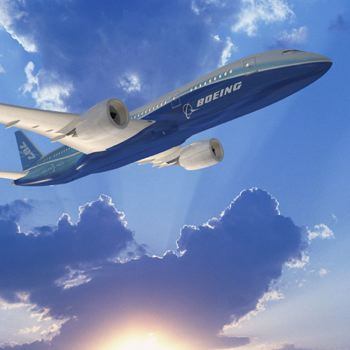 But barring another serious setback, Boeing is on track to deliver its first Dreamliner (to Japan’s All Nippon Airways) by the end of 2010.
But barring another serious setback, Boeing is on track to deliver its first Dreamliner (to Japan’s All Nippon Airways) by the end of 2010.
Not only is Boeing more than two years behind schedule in terms of delivering planes to its airline customers, it may not be delivering exactly what it promised.
The Dreamliner was supposed to revolutionize the industry with its largely outsourced supply chain. Boeing let individual companies build various parts of the plane, and suffered when certain suppliers failed to deliver, or delivered parts that didn’t work quite the way they were supposed. Design and engineering flaws led Boeing to add additional supports and fasteners, weighing down what was supposed to be a featherweight of an aircraft.
Boeing has since purchased a number of its suppliers to establish firmer control over the production process, though it remains to be seen if it can fix the myriad problems.
Even before Ken Burn’s acclaimed series hit the airwaves, America began rediscovering its love affair with our national park system. Affordable, accessible and absolutely breathtaking, a national park offers an easy travel experience in our own backyard.
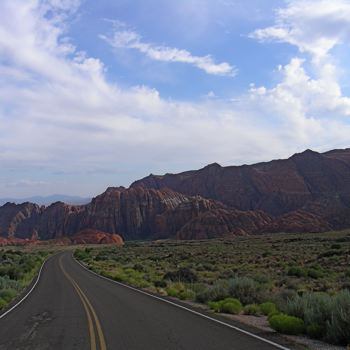 Although 2009 statistics are not yet available, 2008 showed that the top five most-visited units in the system were the Blue Ridge Parkway, Golden Gate National Recreational Area, Gateway National Recreation Area, Great Smoky Mountains National Park, and Lake Mead. Excluding non-park sites, the top five most-visited parks were perennial favorites: Great Smoky Mountains, Grand Canyon, Yosemite, Olympic, and Yellowstone National Parks.
Although 2009 statistics are not yet available, 2008 showed that the top five most-visited units in the system were the Blue Ridge Parkway, Golden Gate National Recreational Area, Gateway National Recreation Area, Great Smoky Mountains National Park, and Lake Mead. Excluding non-park sites, the top five most-visited parks were perennial favorites: Great Smoky Mountains, Grand Canyon, Yosemite, Olympic, and Yellowstone National Parks.
But remember there are 391 units in the National Park System, including seashores, battlefields and cultural sites, many of which are free or low-cost and devoid of crowds.
The annual National Park Pass and the $10 Lifetime Senior Pass make it even easier for travelers to explore sites around the country on a budget.
For more information, visit our National Parks Travel section.
 Travelers have already begun charging up in preparation for going wireless in 2010. Just in time for the holiday travel rush, several airlines offered free Wi-Fi promotions at the end of 2009. Some carriers have already installed in-flight wireless throughout their fleets, while others are rushing to catch up. Passengers seem to love in-flight wireless—as long as it’s a free perk. Early experiments show that travelers are quick to lose that enthusiasm when they have to pay for the service.
Travelers have already begun charging up in preparation for going wireless in 2010. Just in time for the holiday travel rush, several airlines offered free Wi-Fi promotions at the end of 2009. Some carriers have already installed in-flight wireless throughout their fleets, while others are rushing to catch up. Passengers seem to love in-flight wireless—as long as it’s a free perk. Early experiments show that travelers are quick to lose that enthusiasm when they have to pay for the service.
On the ground, some of the hottest gifts of the year were devices that allow you to charge several gadgets wirelessly. The Powermat and the WildCharge allow you to charge your BlackBerrys, iPhones, headsets, and more in one place, whether in a hotel, office or at home—ideal if you travel with multiple gadgets.
For more, visit our Travel Gadgets & Gear section.
Train travel in 2010 is, if you’ll excuse the obvious metaphor, taking two very different tracks in the USA and abroad.
 China, Japan and Europe are busily building ever-more-sophisticated high-speed rail networks. Here in the U.S., Amtrak continues to struggle to provide even a remotely viable method of transportation outside of a few corridors.
China, Japan and Europe are busily building ever-more-sophisticated high-speed rail networks. Here in the U.S., Amtrak continues to struggle to provide even a remotely viable method of transportation outside of a few corridors.
Amtrak’s fastest route—the Acela Express between Boston and Washington, DC—would not even rate as “high-speed” compared to Japan’s Shinkansen bullet trains or France’s TGV.
The effects of the economic stimulus plan will begin to become apparent as more trains hit the tracks to ease bottlenecks on congested routes, and new bridges and renovated stretches of track begin to open. Most importantly for train fans, 2010 will see the announcement of the Obama administration’s selections for the creation of several high- speed rail corridors. With $8 billion in starter funds, these new high-speed rail corridors could even begin construction in 2010, depending on which routes are selected.
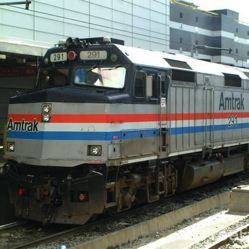 But elsewhere, true high-speed rail lines will be opening or beginning construction all over the world. Britain is in the planning stages for a nationwide high-speed line between London and the Scottish city of Edinburgh. Spain’s highly successful new high-speed line between Madrid and Barcelona will continue to grab an increasing share of the passengers between those two cities as the Spanish high-speed trains expand their range. Germany and Italy are also hard at work expanding their high-speed networks.
But elsewhere, true high-speed rail lines will be opening or beginning construction all over the world. Britain is in the planning stages for a nationwide high-speed line between London and the Scottish city of Edinburgh. Spain’s highly successful new high-speed line between Madrid and Barcelona will continue to grab an increasing share of the passengers between those two cities as the Spanish high-speed trains expand their range. Germany and Italy are also hard at work expanding their high-speed networks.
In China, that government’s economic stimulus is even more heavily focused on the rail system, with a whopping 35 high-speed lines (13,000 km of track) set for completion by the end of 2012. Even India, which has long had a relatively decrepit rail system, is exploring bullet trains, which could begin construction in 2010.
So while Amtrak struggles to get its trains to even approach high-speed status, the rest of the world is rolling ahead.
Get the latest news in our Train Travel section.
MILITARY-THEMED TRAVEL
Military themed travel will likely get a lot of attention with 2010 marking the 65th anniversary of the end of World War II and the 60th anniversary of the start of the Korean War. Tours involving revisiting battlegrounds can be powerful experiences for veterans and non-veterans alike.
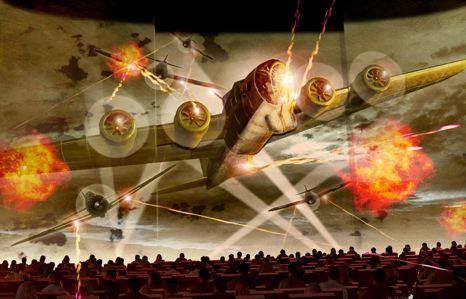 Hard-core enthusiasts can benefit from a military-oriented travel organization since trips are generally tailored to each traveler, with visits to specific battle sites and meetings with veterans from the other side.
Hard-core enthusiasts can benefit from a military-oriented travel organization since trips are generally tailored to each traveler, with visits to specific battle sites and meetings with veterans from the other side.
A company called Military Historical Tours offers tours to South Korea that’s being subsidized by the South Korean government. The same company also hosts trips to the South Pacific and Europe for World War II veterans, and several trips a year to Vietnam for vets and their family members. MilSpec Tours leads groups of veterans and military enthusiasts to sites like Normandy and Vietnam
Even domestic sites are offering more opportunities for military-themed travel. The newly expanded National World War II museum in New Orleans, formerly known as the D-Day Museum, opened its new wing to great fanfare.
If you’re looking to find more great historic sites that are not necessarily in the brochures, check out resources like Military.com, which has a comprehensive guide to museums and memorials all around the country.
Volunteer vacations aren’t exactly a new trend, but April 22, 2010 will mark the 40th anniversary of Earth Day, so this is the year to indulge your inner do-gooder.
In honor of Earth Day, expect to see hotel packages galore that offer volunteer experiences with your overnight stay (look for the Ritz-Carlton’s Give Back Getaways, and Marriott and Renaissance hotels in New Orleans which work with Habitat for Humanity, among others).
Opportunities also abound in national and state parks, and check out the American Hiking Society’s volunteer vacations and alternative spring breaks. Learn how to find and plan a volunteer vacation here.
Click here to check out Earth Day activities and events around the country.
Visit our Voluntourism section for more ideas and tips.
Related links on PeterGreenberg.com:
Link to Original Article on PeterGreenberg.com










 It’s no secret that 2009 was a crazy year in the world of travel.
It’s no secret that 2009 was a crazy year in the world of travel.









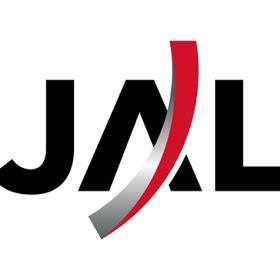 With Japan Airlines on the brink of bankruptcy, speculation abounds as to which major airline alliance will gain control of the carrier.
With Japan Airlines on the brink of bankruptcy, speculation abounds as to which major airline alliance will gain control of the carrier.